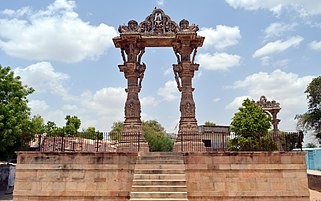Free Courses Sale ends Soon, Get It Now


Free Courses Sale ends Soon, Get It Now



Disclaimer: Copyright infringement not intended.
Context
Vadnagar city
Excavations and findings
History of the city
Trade
Buddhism and Jainism Influence
Architecture and monuments
Roman influence
Must read article:
UNESCO World Heritage sites
https://www.iasgyan.in/daily-current-affairs/world-heritage-sites-47
https://www.iasgyan.in/daily-current-affairs/unesco-world-heritage-sites
Archaeological Survey of India (ASI)
https://www.iasgyan.in/daily-current-affairs/agra-fort-1
https://www.iasgyan.in/daily-current-affairs/centre-reconstitutes-panel-for-studying-sarasvati-river
Significance of the excavations in city
|
PRACTICE QUESTION By highlighting the historical significance of Vadnagar city, explain the criteria required for a place to be listed as a UNESCO world heritage site. (150 words) |
© 2024 iasgyan. All right reserved